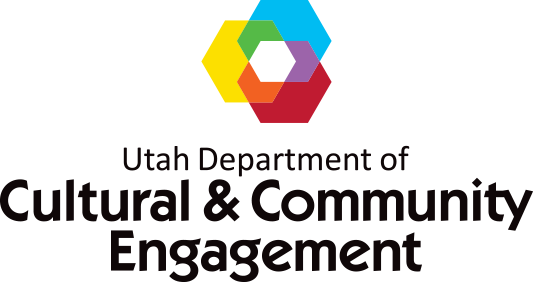By Monique Davila, community engagement coordinator for the Utah Historical Society.
Through the Peoples of Utah Revisited, the Utah Historical Society seeks to widen the lens on Utah’s history and tell the story of all Utahns, past and present. The Peoples of Utah Revisited enables UHS to partner with scholars and Utah community members to collect, preserve, and share Utah’s history. These dedicated efforts help expand UHS’s digital collections, scholarship, and community relationships. Through engagement and relationship building, UHS has conducted more than 40 oral history interviews and digitized 1,000+ photos, recipes, scrapbooks, personal letters, and other historical materials sharing new or untold Utah stories.
Since January 2023, UHS staff have collaborated with more than 30 Utah communities by documenting and sharing their stories on the Peoples of Utah Revisited online collection. A highlight of this type of collaboration took place on September 16, 2023, when UHS partnered with the Nettie Gregory Center in Poplar Grove to help preserve its history. During the event, UHS staff digitized 27 images and conducted 15 short oral history interviews highlighting the center’s history and deep connection to the local community.

Originally named the Salt Lake Community Club, the Nettie Gregory Center opened its doors in 1964 through the collective effort of Salt Lake City’s Black community and Nettie Gregory, advocate and local prominent Black leader. Gregory recognized the need for a community space that fostered growth and safety for Black youth in the city. From its opening until its closure in the early 2000s, the center functioned as both a recreation facility and event space, hosting the local NAACP chapter, cultural celebrations, and community gatherings. Today, the Nettie Gregory Center remains a symbol of resilience and community.

Abdikadir Eftin (Abdi), who started attending the Nettie in 2005, reminisced about the basketball court, eating food in the kitchen, and making friends. Eftin recalled, “Everyone that came to the Nettie were all struggling in our homes, you know…Our parents, you know, [were] trying to make ends meet…But when we came to the Nettie, all that we just forgot. We just came here to just be kids.”
Marsha Boyd, who grew up next to the Poplar Grove neighborhood, recalled how her father, a carpenter, would go and help construct the Nettie Gregory Center on weekends in the 1950s and 1960s. Boyd remembered how long the building took to be built. She said, “Because they had no machinery, the whole building was put together by hand. You know, brick and mortar there, mixing the stuff, and doing that. So it took a long time…but it was definitely a labor of love. Because they, the men, were always out here doing it. And my dad would bring us by to see it coming up. And we just have so many wonderful memories here.”

Every oral history conducted at the Nettie Gregory Center community history event emphasized how special the center was, and still is. Betty Sawyer, community leader and coordinator of Ogden’s Juneteenth Festival, was involved with the center from the mid-1970s until it closed. Sawyer reflected on how beautiful it was to be involved with the center, “One, because outside of the churches, we didn’t have anywhere to go…it was a sense of home and a sense of community. But this was something, ‘This is ours.’ And so the pride that came along, when you walked in the door, like, ‘This is our place.’ You know? ‘We belong here.’ We didn’t have to pretend or put on that mask…We’d just come in and let your hair down.”
Boyd also shared how important the Nettie was to her and the community. “When you look at the little Center, and you look at these other big places that they have, the big centers you know, it’s nothing like them. [The Center] doesn’t have the space, doesn’t have the equipment, doesn’t have anything. But what those places don’t have that we had, that we had a lot of love. And it was cozy, it was friendly. And we were happy. And it was nice to be able to have a place of our own.”
Thank you to Wes Long, editor of Salt Lake City Weekly who first wrote about the center’s history and introduced UHS to the center’s board of directors. Thank you to Duane Bourdeaux, president of the board, other board members, and the Nettie Gregory Center community for helping us preserve and share this history for present and future generations.
To learn more about the Nettie Gregory Center through the digital images and oral histories collected at the September 16 community history event, visit the Peoples of Utah Revisited online collection.

